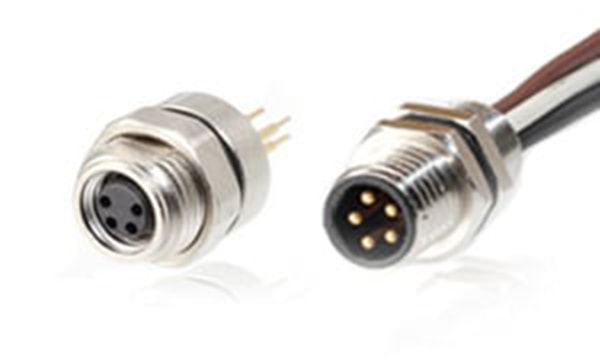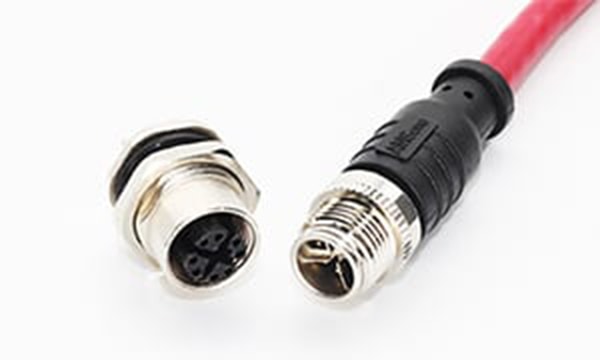Understanding circular industrial connectors
Views: 3274
Author: Site Editor
Publish Time: 2021-05-18
Origin: Site
In the electronics realm, a variety of connectors can be used to transmit power and signals, and carry network and data signals throughout a facility. These multi-pin contact designs are easily installed and removed. Over the years, circular connectors have grown to be some of the most common, as they are more compact and can provide a small envelope compared to their rectangular counterparts. Different applications require different designs. Here’s a look at some of the most common ones.
Circular power connectors
Circular power connectors enable efficient disconnection and reconnection of a power cable from its device. They were developed to replace hardwiring of power cables, which could often be damaged or require extensive service when altering a power supply. The introduction of circular power connecters delivered a quick and compact solution to this problem.
Circular connectors can pack a large number of contacts into a relatively compact size. For instance, eight contacts arranged in a circular layout are more compact than the same eight contacts in a straight row or rectangular layout. However, when higher pin counts are required, rectangular connectors may be a better option. Unlike rectangular connectors, circular connectors don’t have the same keying or polarization options.

M12 and M8 connectors
One of the most common connectors used in industrial automation is the M12 connector. This small, yet critical device, evolved as industrial factories moved from parallel wiring systems to connect machinery and communication devices to a more secure form of distributed control.
The growth of Fieldbus led to a greater demand for connections between PLCs and industrial components that would resist environmental interference while still securely transmitting data. The screw lock and bayonet style of the M12 connector soon became an industry standard in many industrial settings, including machine tool, packaging, automation, and more.
These sensor connectors come with a variety of different coding. A-coding is for sensor/actuator applications using DeviceNet and CANopen. B-coding is ideal for Profibus and Interbus fieldbus applications. C-coding is for North
American sensor connections. D-coding is designed for 5-pin data applications in industrial Ethernet. P-coding is designed for signal applications. S-coding is ideal for power supply applications and prevents mismating with other M12 connectors.
While designs vary from manufacturer to manufacturer, these connectors usually need to be rated for voltages of 250 V and 2 A and higher.

Similarly, M8 connectors are used for smaller sensor actuator devices, such as cylinder switches, proximity sensors, micro switches, and vacuum valves. These space-saving designs are usually available in male and female versions. Female versions feature integrated locking threads and are used as input connections for sensor signals. Male versions are ideal for interfacing with I/O boxes. They usually have much lower voltage and amperage ratings.
Harsh environments
Because most industrial environments are harsh, often causing signal and data interference, possible dirt and water contamination, extreme temperature variations, and vibrations, these circular connectors must be rugged and shielded against EMI/RFI.
To withstand these harsh environments, these connectors are usually made of brass or aluminum, or in some washdown environments, various types of composite plastics. They usually use copper alloy conductors, but will also integrate gold to enhance conductivity. Finally, they often feature IP68 or greater sealing to allow them to be submersed in water or may even be hermetically sealed.
Contact us for the best circular connectors.
As a leading brand with a high commitment to quality when it comes to the manufacture of high-quality circular connectors and other types of circular connector devices, you can count on us for the best products.

 EN
EN DE
DE JP
JP ES
ES SE
SE FR
FR IT
IT CN
CN 한국어
한국어 ภาษาไทย
ภาษาไทย بالعربية
بالعربية Nederlands
Nederlands Türkçe
Türkçe Język polski
Język polski Tiếng Việt
Tiếng Việt Zulu
Zulu Bahasa Malay
Bahasa Malay
